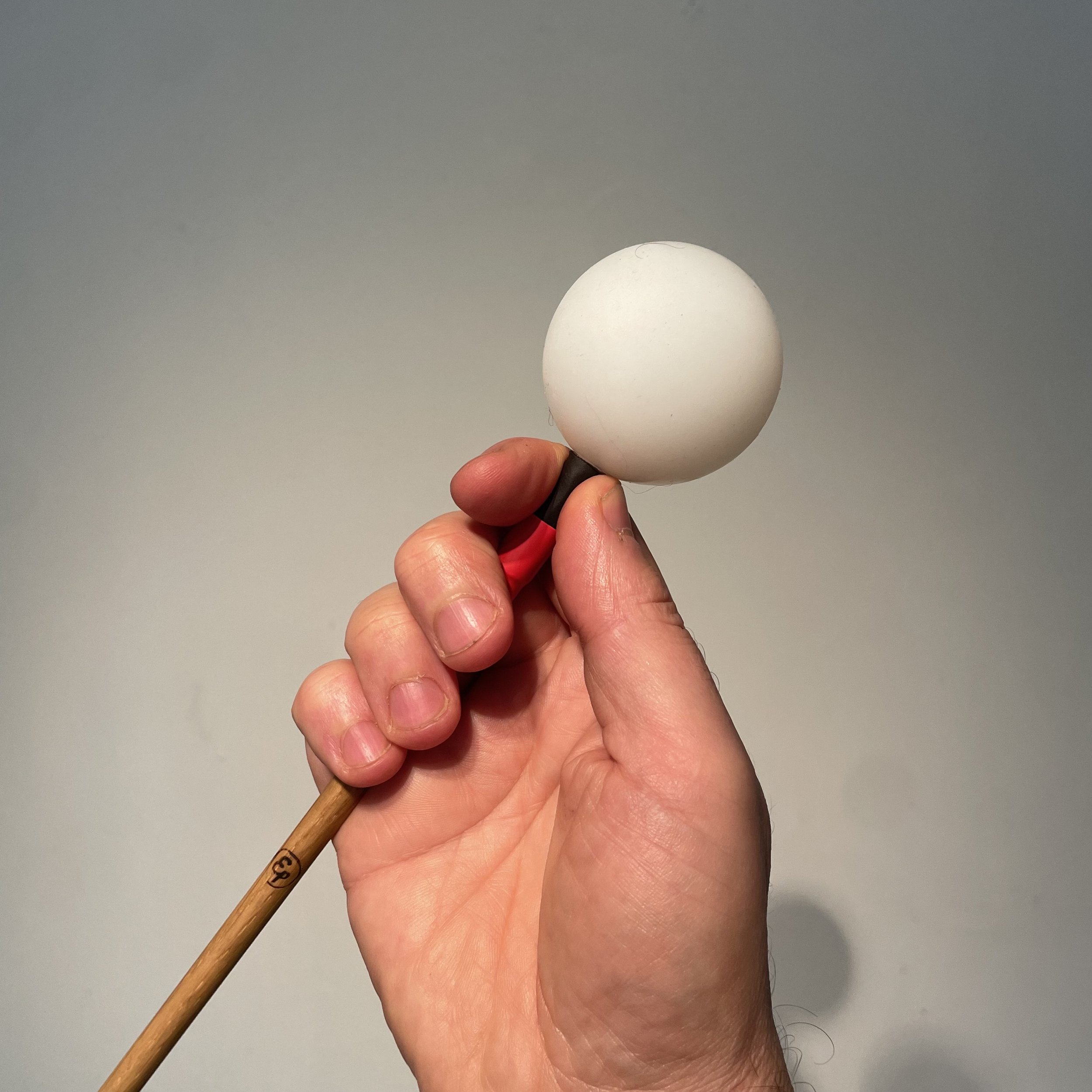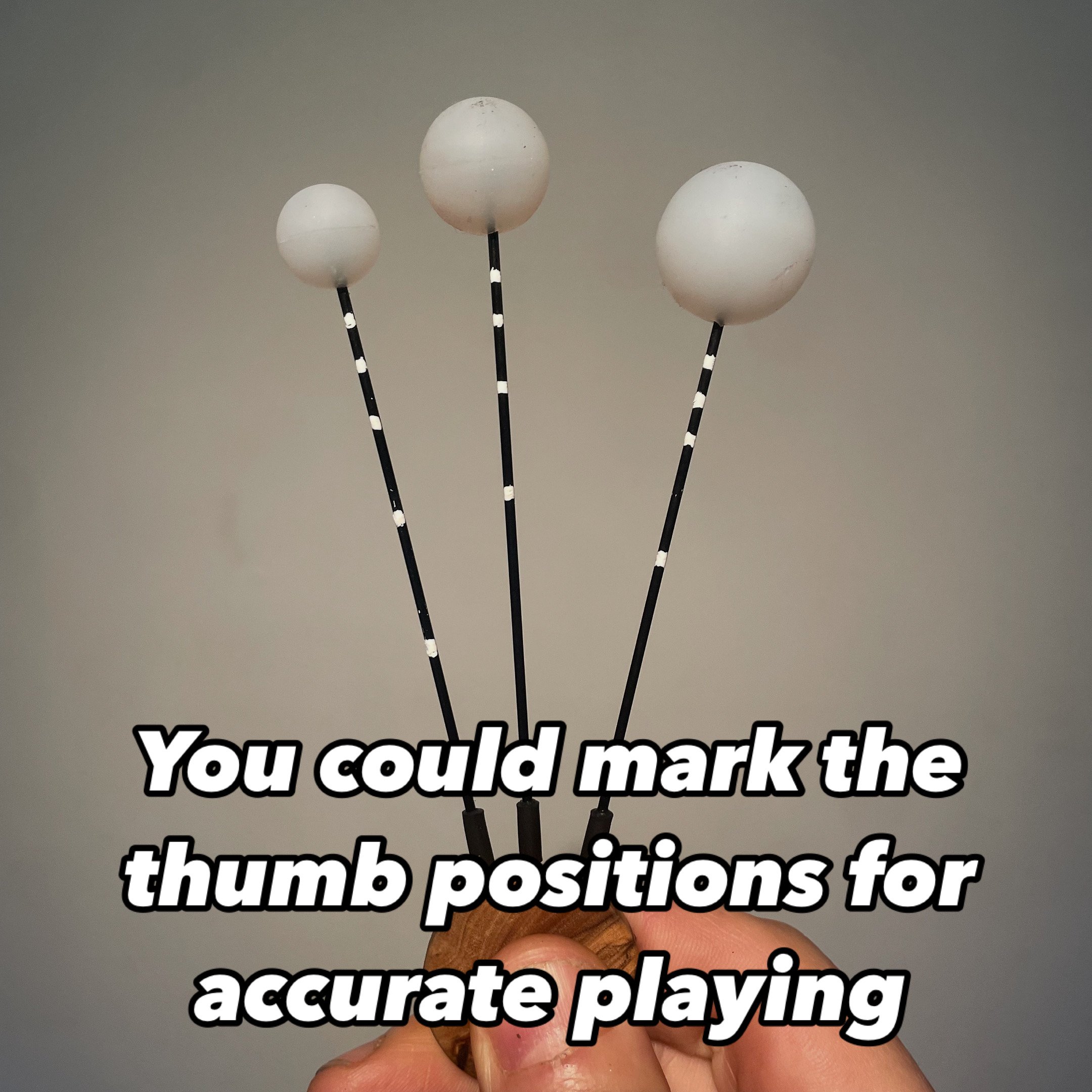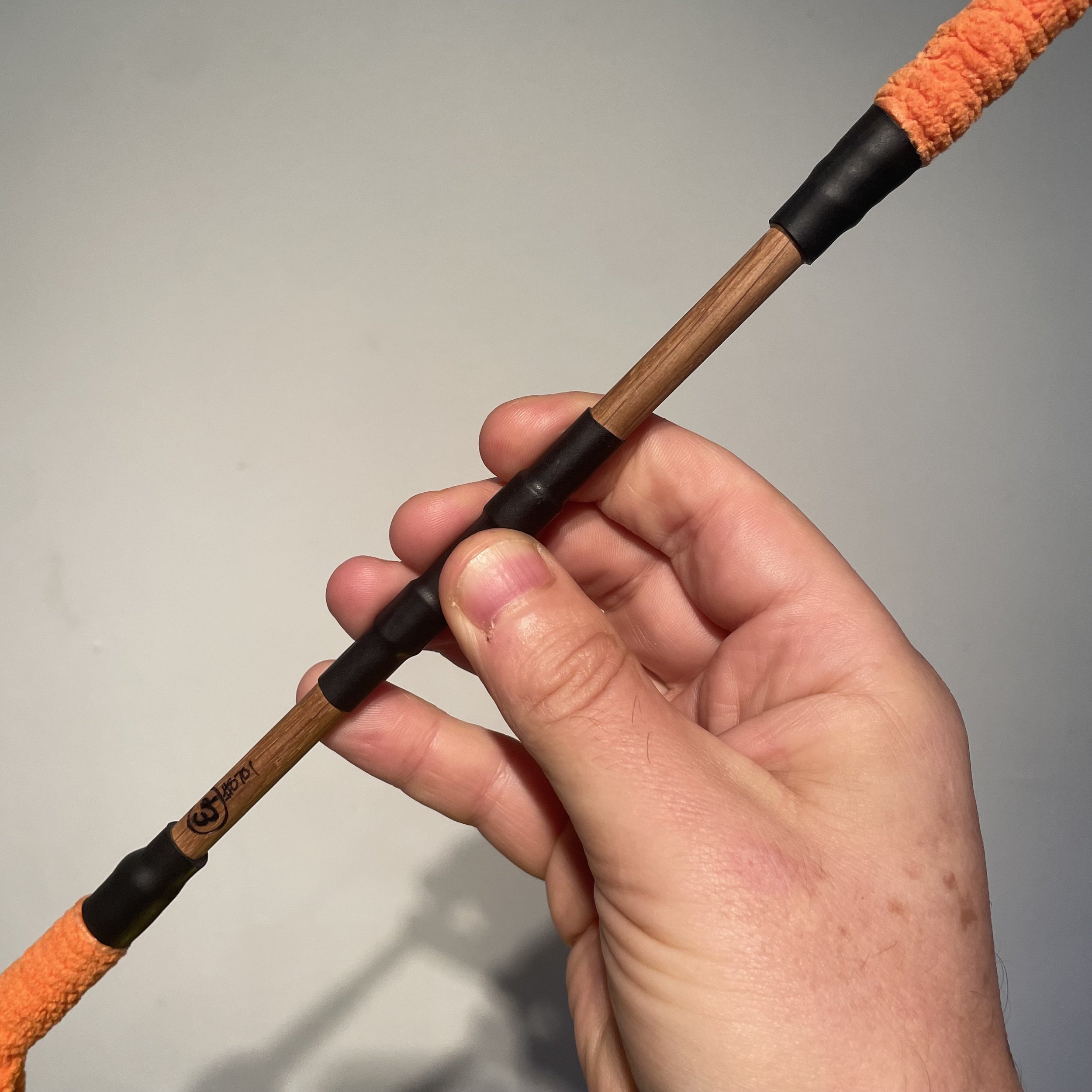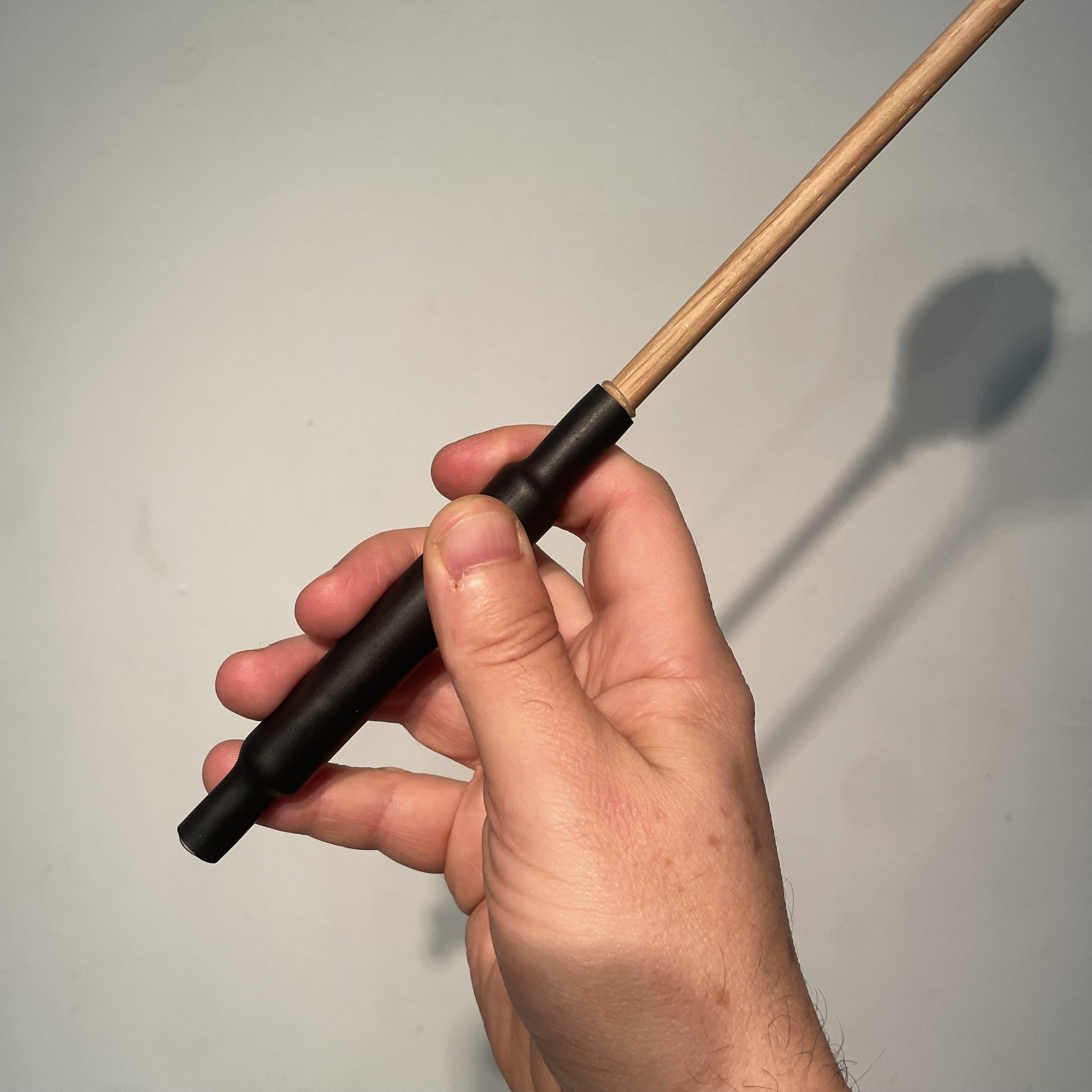Using and caring for your Epic Mallets
Flumi care
Wash them. With washing up liquid and a clean kitchen sponge. Then rinse them. Doesn’t matter if the shaft gets a bit wet, but dry them thoroughly before using them.
My flumies may leave a small trail of silicone dust when new. It rubs off easily and wont tarnish your gong - silicone is inert. Use them, and the trails will stop after a while. The 60mm will need playing for an hour before the dust is gone.
Flumie playing
Hold flexible carbon shaft flumies about a third of the way down. You can change the pitch by applying pressure with your thumb up and down the shaft as you play.
Hold wooden shafts flumies on the black rubber just beneath the ball.
Try them on a window to hear clearly the frequencies you are getting.
Start playing with almost zero pressure and slowly increase it. As soon as it starts resonating - that is your go to pressure = very little.
Try the wooden shaft flumies in different areas of the gong. Some of them will rise a semitone or tone.
Triton Flumi
The Triton has three flumi sizes. They will give you an octave range.
Hold it correctly. Rest the wooden base about where your ring and little fingers meet your palm and then hold it gently in your fingers. Use your thumb to hold it in place by gently resting it halfway up a shaft. Like this, you can play the lowest note for each Flumi.
You can raise the pitch by applying pressure with your thumb as you play. Try varying the pressure and the position of your thumb up the shaft. Feel free to reposition the base as you play to help reach the top if you need.
Try them on a window to hear more easily then frequencies you are getting. A good way to practice pressure and thumb position.
You can’t tame flumies but you can get them on your side, most of the time. Try to keep th tones as pure and steady as possible. If you hear unwanted frequencies starting to develop is easier to dampen your gong to get rid of them than it is to try and wrestle them into submission by playing over the top.
These flumies can be fine tuned. If you feel they aren’t doing what you want you can slide the flumies along the shafts 5 -10mm. So long as the shaft is inserted at least half way you can adjust the tuning very slightly. You may find slight adjustments help the balls to resonate with your gong’s tuning better.
You can use a tuning app and marker pen to mark the pitches. Notice how the distances between each pitch along the shaft become smaller the higher up you go. You can squeeze another note out with your thumb against the bottom of the flumi ball. If you’re into ‘modes’ then you can get some very exotic scales and pitches depending on the key of your gong or accompanying instruments.
Double ended
Hold them how you like. I hold them like a pen and ‘scribble’, but you may find it more comfortable some other way.
Dont try to play fast to begin with (your hand will get tense and tired). Instead focus on clear and evenly alternating strikes at a slow speed. Speed up as you get better with practise. Experiment with moving one end or both towards the edge/centre of the gong.
Holding mallets
Hold them in your fist. If you like to grip your mallets like sword, then don’t put your thumb along the shaft.
Hold them like drum sticks. The lighter mallets on thin shafts can be held in your fingers rather than your fist. You can play with more agility this way. You’ll find using your fingers to generate the stroke (rather than your wrists) is less tiring on your wrists too if thats a problem for you.











